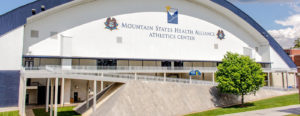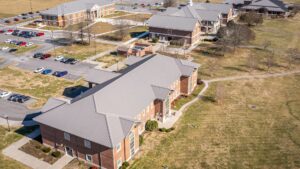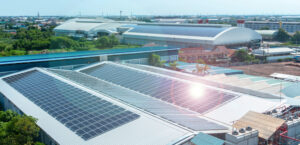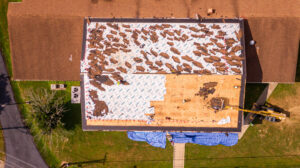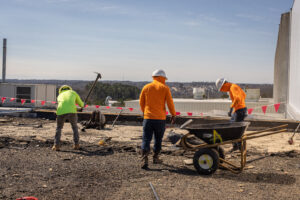Standing seam metal roofing has become a top choice for commercial buildings, and it’s not hard to see why. Its durability, weather resistance, and modern aesthetic appeal make it an excellent investment for any commercial property. But the key to unlocking these benefits lies in the correct installation of the roofing system. This article aims to provide you with detailed instructions on how to install standing seam metal roofing, ensuring optimal performance and longevity.
What is Standing Seam Metal Roofing?
Standing seam metal roofing is a type of roofing system where continuous metal panels run from the roof’s ridge down to the eaves. The seams between the panels are raised, or ‘standing,’ giving the system its name.
This design not only gives the roofing system its unique look but also provides an added layer of weather protection. It’s particularly beneficial for commercial buildings in areas prone to harsh weather conditions.
But the advantages of standing seam metal roofing extend beyond weather resistance. It’s also fire-resistant, requires minimal maintenance, and is energy-efficient. The sleek, modern look of standing seam metal roofing can significantly enhance the aesthetic appeal of your commercial building, making it a smart choice for both functionality and design.
Gathering Your Materials and Tools
A successful installation starts with the right materials and tools. Here’s a detailed list of what you’ll need:
Metal Panels
These are the core of your standing seam metal roof. The number and size of the panels will depend on the dimensions of your roof. These panels are typically made of high-quality metal to withstand various weather conditions. To choose the perfect material, consider factors such as your local climate, the architectural style of your building, and your budget.
Underlayment
This protective layer is placed beneath your metal panels, offering an extra shield against weather elements and preventing metal-on-wood friction that could damage your roof over time. The type of underlayment you choose should be compatible with the metal panels and suitable for your local weather conditions.
Ridge Cap
This component covers the seam at the peak of your roof where the metal panels meet, preventing water and debris from entering the seams. The ridge cap should match the material and color of your metal panels for a uniform look.
Fasteners
These small yet crucial components secure the metal panels and ridge cap to your roof. They should be durable and resistant to corrosion. The type of fasteners you choose should be compatible with the metal panels and underlayment.
Sealant
This product helps create a watertight seal at the seams and around roof penetrations. It’s crucial for preventing leaks.
Metal Shears
These tools are used to cut the metal panels to the correct size. They need to be sharp and durable to make clean cuts. The size of the shears should be suitable for the thickness and type of metal panels you choose.
Seaming Tool
This tool is used to join the seams between panels, creating the ‘standing’ seam. It’s crucial for ensuring a tight and secure fit between panels.
Screw Gun
This tool is used to drive the fasteners into the roof deck. It should be powerful enough to secure the fasteners but gentle enough not to damage the materials.
As for the standard dimensions, it’s best to consult with a professional commercial roofer who can assess your specific needs based on your building’s structure and local building codes. They can also provide valuable advice on the best materials and tools for your project.
Preparing for Installation
Before you start installing your standing seam metal roof, there are a few steps you need to take:
1. Check Local Building Codes
Every region has its building codes and regulations. These rules can affect various aspects of your installation, from the type of underlayment you can use to the method of installation. Make sure you’re familiar with these codes to avoid any compliance issues down the line.
2. Prepare the Roof Deck
The roof deck needs to be clean, dry, and free of any debris before you start the installation. If there’s any existing damage to the roof deck, it should be repaired. This step is vital for ensuring a smooth installation process and prolonging the lifespan of your roof.
You might also want to learn about the benefits and installation techniques of Commercial Corrugated Metal Roofing, which can offer a unique aesthetic and functional edge.
The Installation Process
With the right preparation, the installation process can be smooth and efficient. Here’s a detailed step-by-step guide:
1. Install the Underlayment
The underlayment serves as a protective layer between the roof deck and the metal panels. Begin by rolling out the underlayment across the roof deck, ensuring it lies flat and smooth. Secure it with fasteners, taking care not to tear or damage it in the process.
2. Install the Metal Panels
Starting at one end of the roof, align the first metal panel ensuring it’s straight and secure it with fasteners. Each subsequent panel should overlap the previous one, with the seams lining up perfectly. Continue this process across the roof, checking alignment as you go.
3. Install the Ridge Cap
Once all the panels are in place, it’s time to install the ridge cap. This component covers the top seam where the panels meet at the peak of the roof. Secure it with fasteners and apply a bead of sealant along the edges to create a watertight seal.
4. Handle Roof Penetrations and Flashings
Roof penetrations such as vents or skylights need special attention. Apply sealant around these areas and install flashings to ensure a watertight seal. This step is vital in preventing leaks and potential water damage.
5. Seam the Panels
The final step in the installation process is seaming the panels. Using the seaming tool, join the seams between panels to create the ‘standing’ seam. This process should be done carefully to ensure a tight and secure seal.
Remember, safety should always be your top priority when working on a roof. Always use appropriate safety gear and avoid working in adverse weather conditions.
Interested in other types of metal roofing? Check out our guide on Types of Commercial Metal Roofing.
Avoiding Common Mistakes
Even with the best intentions, mistakes can happen during the installation of standing seam metal roofing. Here are some common ones to watch out for:
Incorrect Panel Alignment: Misaligned panels can lead to issues with the standing seams and can affect the overall look and performance of the roof. Always double-check alignment before securing panels.
Over-Tightening Fasteners: Fasteners should be secure, but over-tightening can cause the metal to warp, leading to leaks and other issues. Apply just enough pressure to secure the fasteners without damaging the material.
Not Sealing Seams Properly: The seams between panels need to be sealed properly to prevent water penetration. Always apply a generous amount of sealant and ensure it’s spread evenly.
Ignoring Safety Precautions: Working on a roof can be dangerous. Always use the correct safety equipment and follow safety guidelines to prevent accidents.
Maintaining Your Roof
Once your standing seam metal roof is installed, it’s important to maintain it properly. Regular inspections can help identify any signs of damage or wear, particularly after severe weather. Any issues should be addressed promptly to prevent further damage. Keeping the roof clean and free of debris can also help maintain its appearance and functionality.
Opting for Professional Commercial Roofing Services
Choosing professional commercial roofing services can significantly simplify the process of installing a standing seam metal roof. With expert roofers handling the project from start to finish, you can expect a seamless and hassle-free experience.
- Initial Consultation and Assessment: Professional roofers will begin by conducting a thorough assessment of your building’s structure and existing roof. They will take into account factors such as your local climate and building codes to recommend the best materials and tools for your project.
- Material Selection: Based on the assessment, the roofers will help you choose the right metal panels, underlayment, ridge caps, fasteners, and sealant. They will ensure these materials are of high quality and suitable for your specific needs.
- Measurement and Fabrication: The roofers will measure your roof accurately to determine the number and size of the metal panels needed. They will then fabricate the panels to the exact dimensions, ensuring a perfect fit.
- Installation: The roofers will install the underlayment, followed by the metal panels, using durable and corrosion-resistant fasteners. They will ensure the panels are securely attached and the seams are tightly sealed to prevent leaks.
- Finishing: After the panels are installed, the roofers will place the ridge cap at the peak of your roof, providing an additional layer of protection. They will also apply the sealant around the seams and roof penetrations to create a watertight seal.
- Cleanup and Inspection: Once the installation is complete, the roofers will clean up the site and conduct a final inspection to ensure the roof is properly installed and meets all building codes.
- Maintenance Plans: Professional roofers can also create a maintenance plan tailored to your specific needs, ensuring your standing seam metal roof is maintained correctly and lasts for many years to come.
With professional commercial roofing services, you can trust that the installation of your standing seam metal roof will be handled quickly and efficiently, reducing stress and allowing you to focus on other aspects of your building’s upkeep.
By opting for professional commercial roofing services, you can rest assured that every aspect of the project will be handled with expertise and precision, resulting in a durable and aesthetically pleasing standing seam metal roof.
Understanding the Costs
How much does a standing seam metal roof cost for commercial buildings?
The cost of installing a standing seam metal roof on a commercial building can vary widely depending on several factors, including the size of the roof, the type of metal used, and the region where you’re located. On average, you can expect to pay between $6 and $10 per square foot, including both materials and labor. This translates to an average total cost of $24,000 to $42,000 for a standard 3,000 square foot roof.
Why is standing seam more expensive?
Standing seam metal roofs tend to be more expensive than other types of roofing due to the high-quality materials used and the specialized installation process. The panels are typically made of high-quality metals like steel, aluminum, or copper, which are more expensive than asphalt shingles or other common roofing materials. Additionally, the installation process requires specialized tools and skills, adding to the overall cost.
How much does labor cost to install a metal roof over shingles?
The labor cost to install a metal roof over shingles can vary depending on the complexity of the project and the region where you’re located. On average, you can expect to pay between $2 to $6 per square foot for labor alone. However, it’s important to note that installing a metal roof over shingles may not be recommended or allowed under local building codes.
How do you estimate a metal roof?
Estimating the cost of a metal roof involves several steps. First, you’ll need to measure the size of the roof in square feet. Then, you’ll need to factor in the cost of the materials, which can vary depending on the type of metal used. Finally, you’ll need to consider the cost of labor, which can also vary depending on the complexity of the project and the region where you’re located. A simple way to estimate the total cost is to get a quote from a local roofing contractor.
Wrapping Up
The installation of a standing seam metal roof on a commercial building is a significant project, but with careful preparation and attention to detail, it can be successfully completed. By following the steps outlined in this article, you can ensure your new roof is installed correctly, providing your building with durable, long-lasting protection.
Frequently Asked Questions
With proper installation and maintenance, standing seam metal roofs can last 40-60 years, significantly longer than many other roofing materials.
While it’s technically possible to install a standing seam metal roof over shingles, it’s not always the best practice. It’s important to check local building codes and consult with a roofing professional before proceeding with this method.
The cost of installing a standing seam metal roof can vary widely depending on the size of the roof, the specific materials used, and the region where you’re located. On average, you can expect to pay between $6 and $10 per square foot. This includes the cost of materials and labor.
Yes, solar panels can be installed on standing seam metal roofs. The raised seams provide a convenient attachment point for solar panel mounting systems, making the installation process easier and less invasive than on other types of roofs.
Yes, standing seam metal roofs are highly energy efficient. They reflect solar heat, reducing the amount of heat absorbed by the building. This can significantly reduce cooling costs during the summer months.
Yes, standing seam metal roofs are highly energy efficient. They reflect solar heat, reducing the amount of heat absorbed by the building. This can significantly reduce cooling costs during the summer months.
Don’t navigate the complexities of a commercial metal roof installation on your own. Let our team of professional roofers handle the process from start to finish, ensuring a seamless, efficient, and high-quality installation.
With our expertise, we’ll help you select the right materials, handle the fabrication, and execute the installation with precision. We’ll also offer SHIELD maintenance plan to ensure your roof stays in great condition for years to come.
Take a look at our portfolio of commercial roofing projects:
Contact us today to learn more about our commercial metal roofing services! With our help, you can trust that your new standing seam metal roof will be installed correctly and provide reliable protection for many years
Don’t wait to give your building the durable, weather-resistant roof it deserves. Contact us today to schedule your initial consultation and take the first step toward a successful commercial metal roof installation.
Visit our Youtube channel to see us in action!


